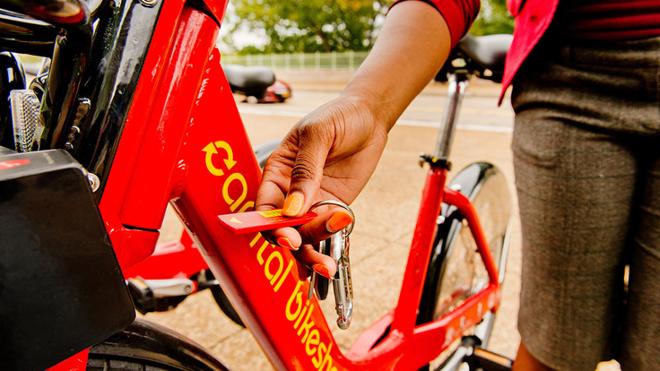Do bike-share programs reduce automobile pollution?
“I think environmental issues are among the important topics that tend to get overlooked in policy, and economics offers a solid framework for both theoretical and empirical analysis of environmental problems.”
One of Tim Hamilton’s interests, both personally and professionally, is the environment. As an assistant professor of economics in the Robins School of Business, he has found the opportunity to spend his time researching issues that are of personal importance to him, while also being applicable to a larger audience.
What began as a casual conversation about bicycles on commuter roads with a friend and fellow environmental economist, Casey Wichman, fellow at Resources for the Future, turned into a serious analysis which the pair are still working on today. “For some reason, the existence of bicycle commuters on the road gets some people worked up. One side thinks they’re saving the world by riding their bike, while the other thinks they’re creating anarchy on the roads. That opens up space for an empirical study.”
The pair began digging around and found that University of Maryland, where Wichman was completing his Ph.D. at the time, had an incredible dataset of vehicle traffic. That information, combined with access to Capital Bikeshare’s data enabled them to look more seriously at the issue.
What was originally SmartBike D.C. evolved in today’s Capital Bikeshare, which offers over 350 stations and 3,000 bikes. Tourists, commuters and locals are able to rent any available bike, ride it, and return it to any station around the District. As of September 2015, over 10.8 million trips have been taken with Capital Bikeshare bikes.
“Casey was a great coauthor to have on this paper,” Hamilton shared. “He was curious and spent a lot of time researching other bike-share studies and programs. I was a more interested in playing with the data. We had a great dataset that was very finely defined in both time and space, which gave us the opportunity for a creative empirical analysis. I think our strengths and interests worked very well together.”
The study looked at the impact of bike-share stations on congestion during weekday morning rush hours from 2010 to 2012, and found that surrounding areas saw a decrease in congestion by two to three percent. “My hope is this research pushes the conversation forward,” Hamilton shared. “Like most studies it has its flaws and its drawbacks, but it’s just a little bit more information in the discussion of addressing pollution from automobiles. A lot of cities have adopted bike-share programs in the last ten years. What we found is that they do have an impact, albeit a small one. They do more than just create headlines so a city can say its environmentally-friendly.”
Hamilton and his colleague plan to continue working on this research with the general theme of analyzing the issue of automobile pollution by looking deeper into other public transportation options as well as bike-shares.
“The goal in writing this paper was (and is) to publish a study that contributed to a growing academic literature that explores the relationship between municipal-level policies and the environment. At the same time, the paper received a bit of attention from media sources. In cities that have large bike-share programs, this is an issue that is of concern to people. It’s exciting to see your research have such a direct connection to those outside the field.”
Hamilton himself is an avid user of bike-sharing programs, using the system in D.C., Boston and New York City. “It’s incredibly convenient. I think that’s the point of the whole thing. You don’t need to be environmentally conscious, or even care at all. Use it because it’s the easiest thing to do, and it just so happens you might be doing something good,” he said.
Photo Courtesy of Sam Kittner/Capital Bikeshare
